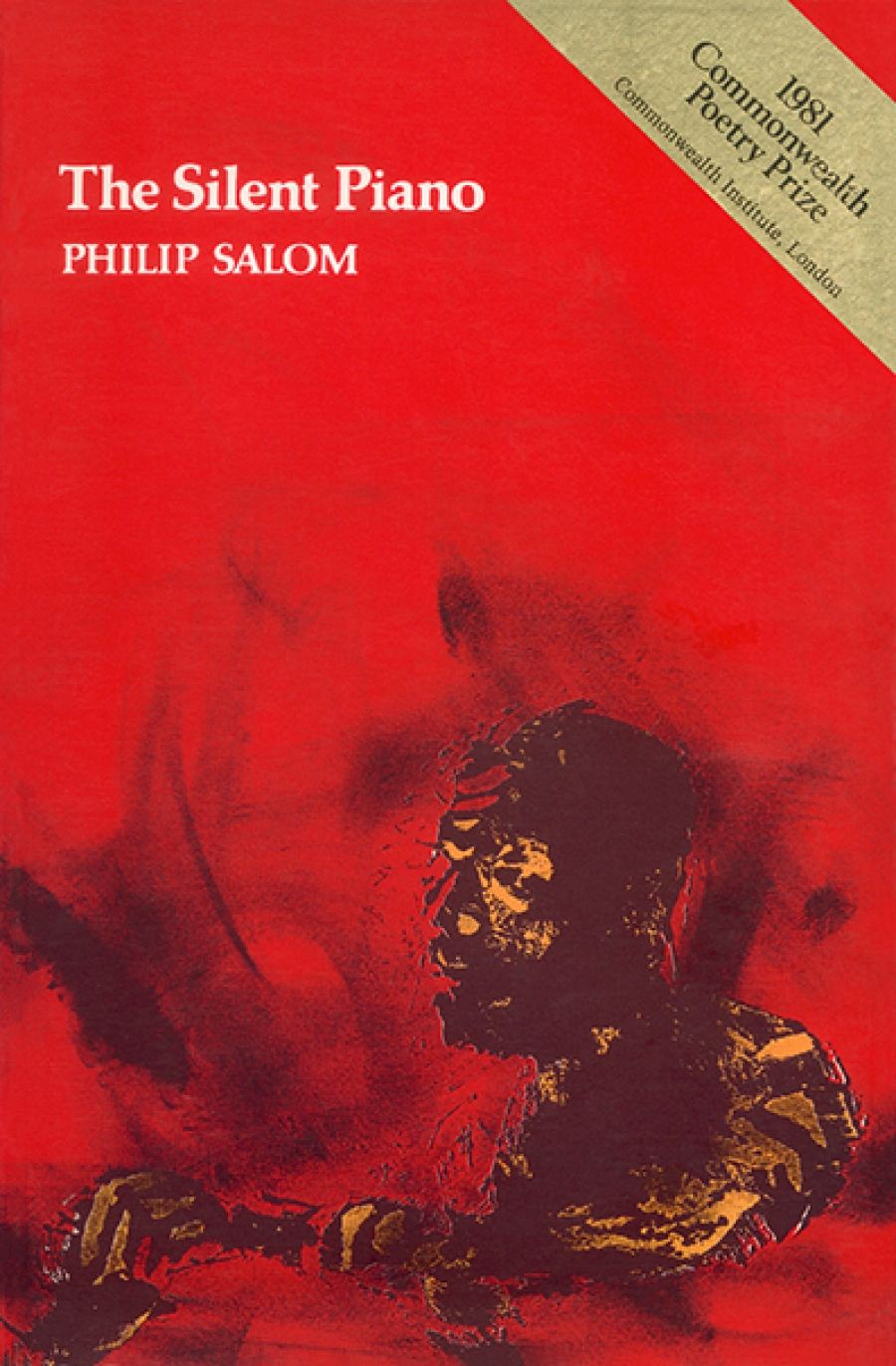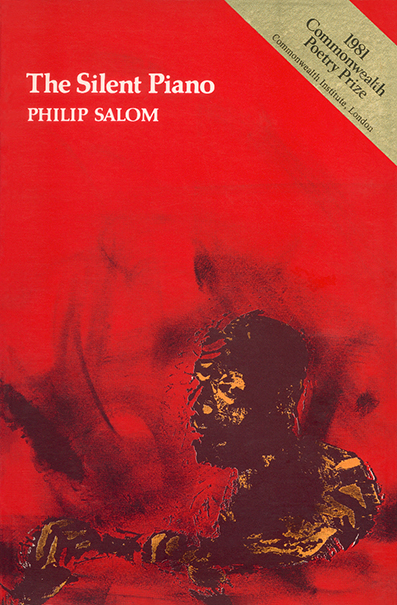
- Free Article: No
- Contents Category: Poetry
- Review Article: Yes
- Article Title: Religious Guilt and Resolution
- Online Only: No
- Custom Highlight Text:
Thirty-year-old Western Australian poet Philip Salom’s first collection takes its title from Camus: ‘... a prisoner in a camp where cold and hunger were almost unbearable – who constructed himself a silent piano.’
- Book 1 Title: The Silent Piano
- Book 1 Biblio: Fremantle Arts Centre Press, $4 pb, 94 pp
- Book 1 Cover Small (400 x 600):

The poetry is haunted by a sense of residual adolescent and religious guilt (‘dream finds my way back/to some old punishment or grief/or mysterious space before that’ – ‘Breath’), vague unsatisfied mystical yearnings and disillusionment. But Salom is tough-minded, disciplined and determinedly honest for the most part. A resolution, if any, is found in the sustaining necessity of art:
… from
his silent piano, mute, imprisoned
music
begins to climb: from a not-yet-
forgotten
universe of ghosts, sweet, sublime
bars of brokenness ring out.
(‘Petior’)
There is pain in much of the writing, the precise origins of which are not made quite clear, but never self-pity or self-indulgence. In many poems (‘Figures in Clay II’, Winter’, ‘The Sleeping Dog’, ‘A Last Winter Morning’) which on the surface seem simply descriptive, Salom’s writing impresses with the way it suggests a genuine spiritual restlessness, a working through of complex and powerful mixed emotions. There are moments of breakthrough:
It is not the invasion I fear
but the too few battles I have set my
fear against.
In my soul. My dark God speaks.
Who is the cause of this darkness
but myself? …
(‘Jezba’)
and violent, ironic anticipations of release:
I, earth’s creature, huge risen urge,
will meet as lover, winter, the radiant
whore
vast cleavaged cockteaser, voluptuous
priestess, shaking out her brazen
skirts,
her raucous laughter filling my head.
(‘Drought’)
Often, though, the most successful poems are those which seek to identify the blocks, the desperations. Salom’s speakers seem forever tormented by their own essential separateness, almost in-variably interpreted as failure, a seemingly inescapable imprisonment of spirit. Predictable enough in the circumstances of a rural childhood, where ‘All seemed a measure of the soul / too huge to grasp in a child’s / fast grip, to be gathered into feelings ...’ (Figures in Clay II), the sense of frustration becomes both more specific and more general as the poet matures:
...the strange aura of habits
overcome, pour their lineament
cause and effect. am of drab
brethren, sustained by the dogma of
forms.
(‘The Confinement’)
Salom’s verse is conservative in style and formally restrained, which tends to heighten the effect of the frequently violent imagery. In many of the descriptive lyrics, scenes from memory forcefully invade the meditation as brutally physical facts:
Blackened cattle, like flawed statues
for a day, crammed into fence corners
where they tore at life
as death mounted them and sang
from a wobbling, distorted mouth.
(‘Bushfire’)
Salom obviously believes that poetry ought not concern itself with violence as such, but with the state of a mind which has come to terms with violence. He does not seek expiation, but equilibrium. The intensity he brings to bear, however, can sometimes have the opposite effect. It is not the unmediated cruelty of observation, memory or fact that threatens to get out of hand, but rather the imagination that seeks to deal with it and make it over. In several places the voice becomes melodramatic and strained:
His blunt instrument, then the sharp:
blade on their umbilicus.
They pretend, speak to her, move in.
Float on the disc of sight,
whore to the sins of imagination,
tart to the faults of law
gathered in their loins.
(‘The Italian Girl’)
The volume has one annoying stylistic fault. Salom seems obsessed with the notion of closure, a habit of summing up at the end in a line or two that makes the poem click shut like a box. He shows he can write some of the most attention-seeking last lines in the business:
Shriek!
Parrot. Yak! Yak! Yak!
I am childhood: a parrot
baffled by plumage.
(‘Figures in Clay II’)
The Word: guilt’s knife on the throat
of a beast
The Word goes wrong, like the mind.
(‘The Scriptures’)
Love falls away from images,
yet the images remain.
(‘The Dancer’)
Often, though, his striving for the clincher, the falling cadence, the gnomic image, is too conscious and too predictable. It leads to overkill, an unnecessary pointing up of something which has been more than implicit in the rest of the poem. Sometimes his endings are simply clumsy:
All has been reflected. Soul
emerged from possibility, broke
the waters of the heart’s wish,
and was consumed
by energetic, tantalising form.
(‘Recollections of Night’)
These blemishes aside, however, The Silent Piano remains a firm and genuinely interesting first collection.


Comments powered by CComment